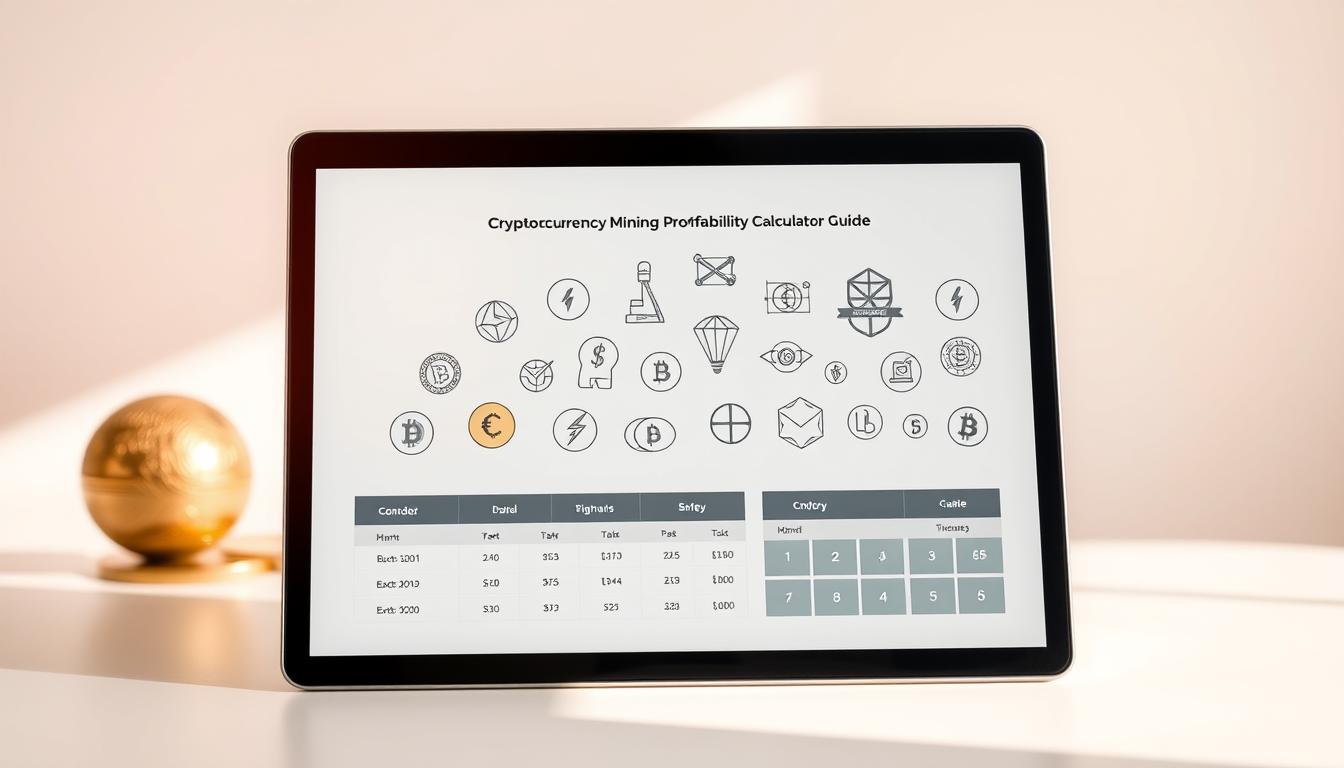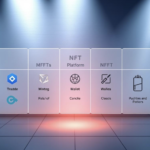Now Reading: Zero Knowledge Proof NFT Privacy Preserving Ownership Verification Protocols
- 01
Zero Knowledge Proof NFT Privacy Preserving Ownership Verification Protocols
Zero Knowledge Proof NFT Privacy Preserving Ownership Verification Protocols

Modern blockchain systems face a critical challenge: balancing transparency with confidentiality. Cryptographic innovations now allow users to validate transactions without exposing personal details, creating new possibilities for secure digital interactions. This breakthrough addresses growing concerns about data exposure in decentralized networks.
Traditional methods for confirming asset ownership often require revealing sensitive information. New approaches enable verification through mathematical certainty rather than public disclosure. These systems maintain transaction legitimacy while shielding participant identities – a game-changer for high-value digital collectibles.
The technology behind these solutions evolved from academic research to practical applications in recent years. Marketplaces handling exclusive digital items particularly benefit from enhanced discretion features. By implementing these methods, platforms can ensure both security and user confidentiality coexist effectively.
Key Takeaways
- Advanced cryptography enables secure validation without data exposure
- Digital collectibles marketplaces gain enhanced protection features
- Mathematical proofs replace traditional disclosure requirements
- Modern blockchain systems prioritize both transparency and confidentiality
- High-value transactions benefit from improved identity protection
Overview of zero knowledge proof NFT privacy preserving ownership verification protocols
Traditional methods for confirming digital asset possession often expose unnecessary details. Public ledgers typically display wallet addresses and transaction amounts, creating privacy risks. Advanced cryptographic methods like zero-knowledge proofs enable verification through mathematical certainty rather than visible records.
This approach allows collectors to confirm rights to exclusive items without revealing:
- Complete transaction histories
- Wallet balance specifics
- Personal identification markers
Marketplaces implementing these systems face unique technical demands. Verification processes must maintain speed despite complex computations. User interfaces need simplification to avoid overwhelming non-technical collectors.
| Aspect | Traditional Validation | Advanced Validation |
|---|---|---|
| Data Visibility | Full transaction history exposed | Only ownership status confirmed |
| Security Risks | High (public address tracking) | Low (encrypted verification) |
| System Load | Lightweight processing | Heavy cryptographic computation |
High-value art and collectible markets particularly benefit from these innovations. Discreet verification encourages participation from institutions requiring confidentiality. As platforms adopt these methods, user trust in digital asset ecosystems grows stronger.
Understanding Zero-Knowledge Proofs: The Foundation
Digital trust systems rely on mathematical principles that validate truth without exposing secrets. These methods enable secure confirmation of facts through encrypted exchanges rather than visible evidence. At their core lies a trio of properties that make private validations possible in public networks.

Key Properties: Completeness, Soundness, and Zero-Knowledge
Three pillars support every functional validation system. Completeness ensures proper credentials always confirm legitimate claims. A collector with valid rights can consistently demonstrate possession through correct protocols.
Soundness acts as a fraud prevention mechanism. Dishonest parties can’t fake evidence to support false ownership assertions. This mathematical certainty protects marketplaces from counterfeit claims.
The zero-knowledge aspect prevents unnecessary data leaks. Verification processes confirm truthfulness while keeping details like transaction patterns or personal identifiers hidden. Only the essential fact – legitimate ownership – gets revealed.
| Property | Function | Benefit |
|---|---|---|
| Completeness | Validates true claims | Reliable verification |
| Soundness | Blocks false claims | System integrity |
| Zero-Knowledge | Hides sensitive data | User protection |
The Historical Emergence and Impact on Privacy
MIT researchers Goldwasser, Micali, and Rackoff pioneered these concepts in 1985. Their work transformed theoretical cryptography into practical tools for secure communications. Early applications focused on military-grade data protection before blockchain adoption.
Modern implementations build upon their interactive proof-system framework. Cryptographic protocols now enable trustless validations across decentralized networks. This evolution allows market participants to confirm asset legitimacy while maintaining total discretion over their digital footprints.
Cryptographic Protocols and Their Importance in Blockchain
Digital trust in decentralized networks relies on mathematical frameworks that secure interactions between strangers. Cryptographic protocols act as invisible guardians, ensuring every transaction follows predefined rules while hiding sensitive details. These systems transform complex equations into practical shields against fraud and manipulation.

Blockchain networks use these protocols to achieve three critical goals:
- Authenticate asset transfers without revealing personal identifiers
- Prevent duplicate spending through encrypted validation checks
- Maintain network consensus through algorithmic enforcement
High-value digital markets depend on these safeguards to operate at scale. Unlike traditional validation methods, cryptographic systems enable instant confirmation of asset legitimacy. This efficiency comes from optimized code structures that balance security with processing speed.
| Feature | Traditional Systems | Cryptographic Systems |
|---|---|---|
| Security Level | Moderate | Military-grade |
| Transaction Speed | Fast | Variable (optimizable) |
| Scalability | Limited | High potential |
Developers face challenges when implementing these protocols. Complex computations require specialized hardware for smooth operation. However, recent advancements in algorithm optimization have reduced energy consumption by up to 40% in test environments.
The evolution of blockchain technology continues to push cryptographic innovation forward. Future systems may automate compliance checks while preserving user anonymity. This progress could redefine how digital markets handle authentication for rare or exclusive items.
Interactive and Non-Interactive ZKP Systems Explored
Secure digital transactions rely on two distinct validation methods that prioritize user convenience and system integrity. These approaches balance real-time interaction needs with asynchronous verification demands across different platforms.

Interactive Zero-Knowledge Proof Mechanisms
Real-time validation methods require active participation between parties. A prover and verifier engage in multiple exchanges to confirm asset legitimacy through randomized challenges. This approach suits scenarios demanding immediate confirmation, like live auctions or instant transfers.
Each round of communication strengthens security through unpredictable questioning. Only valid owners can consistently provide correct responses across successive interactions. However, this method becomes impractical for delayed verifications or offline validations.
Non-Interactive Approaches: zk-SNARKs and zk-STARKs
Standalone validation systems eliminate ongoing communication requirements. zk-SNARKs generate compact proofs using pre-established parameters, enabling quick checks on mobile devices. These systems excel in high-speed trading environments where every millisecond counts.
zk-STARKs remove dependency on initial setup phases while offering quantum-resistant security. Their scalable transparent architecture suits platforms requiring auditability, though larger proof sizes increase storage demands. Both methods enable verification without prover involvement post-proof generation.
| Type | Communication | Setup | Proof Size | Best For |
|---|---|---|---|---|
| Interactive | Multiple rounds | None | Minimal | Live authentication |
| zk-SNARKs | None | Trusted | Small | Mobile apps |
| zk-STARKs | None | Transparent | Large | Quantum-safe systems |
Efficiency Considerations in ZKP Systems
Processing speed and resource allocation determine practical applications. Interactive systems consume more bandwidth but require less computational power per exchange. Non-interactive methods shift workload to proof generation while enabling instant verification.
Platforms must balance proof size against validation speed. zk-SNARKs offer space efficiency, while zk-STARKs provide future-proof security at the cost of increased storage. Optimal choices depend on specific use cases and infrastructure capabilities.
The Role of Prover Verifier Engagement in ZKPs
Digital authentication methods have transformed how systems confirm legitimacy while protecting user identities. At the heart of this revolution lies a unique partnership between two parties: the prover and verifier. Their interaction forms an invisible trust bridge built on cryptographic principles rather than personal data exchange.

Ensuring Trust Through Cryptographic Challenges
The verification process works through mathematical challenges that only valid asset holders can solve. A prover demonstrates control of digital items by answering randomized questions from the verifier. Each correct response increases confidence without exposing:
- Wallet addresses
- Transaction timestamps
- Collection size details
This method replaces traditional documentation checks with algorithmic certainty. Marketplaces gain assurance through encrypted confirmations rather than vulnerable paper trails. The system’s strength comes from its ability to validate claims while maintaining complete user anonymity.
| Feature | Traditional Verification | ZKP Verification |
|---|---|---|
| Data Exposure | Full disclosure required | No sensitive information shared |
| Trust Mechanism | Third-party reliance | Mathematical proofs |
| Fraud Potential | High | Near-zero |
High-value collectible platforms benefit most from this approach. Artists and investors can securely trade exclusive digital items without fear of exposure. As adoption grows, these systems set new standards for private yet verifiable transactions in decentralized markets.
How ZKPs Secure NFT Ownership Without Revealing Information
Digital collectibles require validation methods that confirm rights while shielding sensitive details. Advanced cryptographic techniques achieve this through mathematical bindings that hide critical information during checks. Owners demonstrate control of assets without revealing wallet identifiers or transaction patterns.
- Wallet balance specifics
- Historical transfer records
- Asset valuation metrics
| Verification Method | Data Exposed | Validation Process |
|---|---|---|
| Traditional | Full transaction trail | Public ledger inspection |
| ZKP-Based | Ownership status only | Encrypted proof confirmation |
Specialized algorithms generate mathematical evidence through commitment schemes. These digital bindings link owners to assets while keeping keys and addresses hidden. Marketplaces verify proofs through automated checks rather than manual document reviews.
Cross-platform compatibility enables confidential trading across different networks. Collectors maintain anonymity when moving assets between marketplaces or blockchains. Institutions and high-profile traders benefit from discreet participation in digital markets.
Emerging techniques support complex arrangements like shared control and conditional transfers. Time-locked access and multi-party agreements operate through encrypted logic gates. These systems expand use cases while maintaining strict confidentiality standards.
Zero-Knowledge Proofs for Privacy and Transaction Integrity
Digital marketplaces face a unique dilemma: proving transaction legitimacy while protecting sensitive details. Cryptographic solutions resolve this conflict through mathematical validation that confirms essential facts without exposing private data. This approach maintains blockchain transparency requirements while shielding user identities and commercial terms.
Every asset transfer generates encrypted proof of validity. Systems verify three critical elements:
- Proper authorization for transfers
- Consistent royalty distributions
- Accurate smart contract execution
Fraud prevention mechanisms operate through algorithmic checks. Double-spending attempts fail automatically, as duplicate transactions create conflicting cryptographic signatures. Marketplace fees and payment splits validate through hidden calculations, ensuring all parties receive correct amounts.
| Verification Type | Visibility | Security Level |
|---|---|---|
| Public Ledger | Full exposure | Moderate |
| ZKP-Based | Selective disclosure | Military-grade |
High-value collectors benefit from discreet trading capabilities. Institutions can participate confidently, knowing transaction integrity remains provable without revealing bidding strategies. This dual protection model meets regulatory demands while attracting serious investors to digital asset platforms.
Modern systems achieve this balance through optimized proof constructions. Verification processes take milliseconds, maintaining marketplace performance standards. As adoption grows, these methods redefine secure commerce in decentralized environments.
Blockchain Development and Zero-Knowledge Protocol Applications
Building secure decentralized applications requires balancing multiple technical priorities. Developers now integrate advanced cryptographic methods into blockchain frameworks to enhance functionality while protecting user data. These systems enable platforms to process sensitive transactions without compromising speed or transparency.
Implementing privacy-focused solutions involves three critical phases:
- Protocol selection based on platform requirements
- Smart contract modifications for proof validation
- Off-chain computation infrastructure setup
Developers face key challenges when enhancing existing networks. Proof generation times can impact marketplace performance during peak trading periods. Energy-efficient algorithms help maintain system efficiency while handling complex cryptographic operations.
| Development Approach | Processing Time | Resource Use |
|---|---|---|
| Basic Integration | Fast deployment | High computation |
| Optimized Systems | Medium setup | Balanced load |
| Custom Solutions | Extended development | Low maintenance |
Cross-chain compatibility introduces additional complexity. Networks must establish standardized validation methods while maintaining unique security features. Successful implementations allow assets to move between chains securely, as seen in privacy-focused transactions.
Ongoing maintenance requires monitoring proof verification costs and network congestion patterns. Automated scaling solutions adjust computational resources based on real-time demand. These optimizations ensure smooth operation even during high-volume trading events.
Real-World Use Cases: Identity and Supply Chain Verification
Innovative verification methods are transforming industries beyond digital markets. Organizations now confirm critical information while protecting sensitive data, reshaping how trust operates in high-stakes environments.
Identity systems enable users to validate age or citizenship without sharing full documents. This selective disclosure approach lets individuals prove specific attributes through encrypted credentials. Educational institutions and financial services already use these systems for secure access management.
In supply chains, companies authenticate products without exposing trade secrets. Pharmaceutical firms track shipments using DID-based systems that verify origins while hiding proprietary logistics data. Sustainability markets similarly benefit, with carbon credit platforms ensuring traceability through tokenized records.
These use cases demonstrate the adaptability of advanced validation techniques. From healthcare to manufacturing, industries gain tools to balance transparency with confidentiality. As adoption grows, these methods will redefine secure information exchange across global networks.
FAQ
How do cryptographic protocols confirm digital asset ownership without exposing user data?
Using advanced methods like zk-SNARKs, these systems allow a prover to validate ownership to a verifier through mathematical guarantees. This ensures transactional integrity while keeping personal details like wallet addresses or transaction histories encrypted.
What distinguishes interactive from non-interactive systems in authentication processes?
Interactive mechanisms require real-time communication between parties, while non-interactive approaches (e.g., zk-STARKs) use pre-generated proofs. The latter, adopted by platforms like Ethereum, reduces latency and enhances scalability for decentralized applications.
Can these frameworks be applied beyond digital art verification?
Yes. Industries like supply chain logistics (e.g., IBM Food Trust) and identity management (e.g., Microsoft ION) use similar techniques to authenticate product origins or validate credentials without compromising sensitive data.
How do developers address performance bottlenecks in large-scale networks?
A> Optimizations like recursive proofs and hardware acceleration improve efficiency. Projects like Mina Protocol use succinct blockchain designs to maintain speed without sacrificing security, even as user bases grow.
Are there risks of malicious actors exploiting these verification systems?
Robust cryptographic standards minimize vulnerabilities. Regular audits by firms like Trail of Bits and OpenZeppelin ensure implementations resist attacks, such as false proof submissions or replay attempts.
What barriers exist when integrating these protocols with existing ledgers?
Compatibility issues between consensus mechanisms and proof generation can arise. Solutions like Polygon’s zkEVM demonstrate how tailored virtual machines enable seamless interoperability with Ethereum-based smart contracts.
Which sectors benefit most from privacy-preserving authentication tools?
Healthcare, finance, and government agencies leverage these systems for secure record sharing. For example, Banco Santander uses ZK-based validations for cross-border payments while adhering to GDPR and CCPA regulations.















